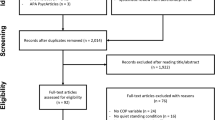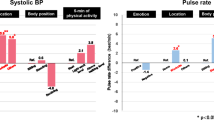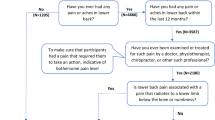Abstract
Appropriate body posture is important for accurate blood pressure (BP) measurement. However, the impact of an unsupported back on BP readings is currently controversial. This study included 224 subjects (18–86 years old, 54.5 ± 15.5 years old, 105 males). BP was measured with an oscillometric BP device randomly following one of two protocols for back support conditions: (1) supported–unsupported–supported–unsupported, or (2) unsupported–supported–unsupported–supported. The average of the two systolic BP (SBP) and diastolic BP (DBP) readings in the same position was recorded as the final BP value. The differences in BP between the unsupported and supported back conditions were calculated as delta BP. Moreover, the percentage variation in BP (PV) was calculated with the formula delta BP/BP with an unsupported back. Multivariable regression analysis evaluated the impact of age, sex, hypertension history and supported BP level on PV. The SBP/DBP levels measured with an unsupported back were slightly higher than those when the back was supported (132.7 ± 19.5/79.6 ± 12.9 mmHg vs. 130.3 ± 20.0/78.5 ± 14.3 mmHg), and the delta SBP (2.3 mmHg) was statistically significant. The multivariable regression analysis showed that age was a positive factor but supported SBP level as a negative factor for systolic PV, while age and supported DBP level were positive factors, but hypertension history was a negative factor for diastolic PV. For a group participant, the mean difference in oscillometric SBP/DBP in the unsupported back position was 2.3/1.0 mmHg higher than that in the supported back position.
This is a preview of subscription content, access via your institution
Access options
Subscribe to this journal
Receive 12 print issues and online access
$259.00 per year
only $21.58 per issue
Buy this article
- Purchase on Springer Link
- Instant access to full article PDF
Prices may be subject to local taxes which are calculated during checkout
Similar content being viewed by others
References
Campbell NRC, Padwal R, Picone DS, Su H, Sharman JE. The impact of small to moderate inaccuracies in assessing blood pressure on hypertension prevalence and control rates. J Clin Hypertens. 2020;22:939–42.
Kallioinen N, Hill A, Horswill MS, Ward HE, Watson MO. Sources of inaccuracy in the measurement of adult patients’ resting blood pressure in clinical settings: a systematic review. J Hypertens. 2017;35:421–41.
Cushman WC, Cooper KM, Horne RA, Meydrech EF. Effect of back support and stethoscope head on seated blood pressure determinations. Am J Hypertens. 1990;3:240–1.
Handler J. The importance of accurate blood pressure measurement. Perm J. 2009;13:51–4.
Tolonen H, Koponen P, Naska A, Männistö S, Broda G, Palosaari T, et al. Challenges in standardization of blood pressure measurement at the population level. BMC Med Res Methodol. 2015;15:33.
Ringrose JS, Wong J, Yousefi F, Padwal R. The effect of back and feet support on oscillometric blood pressure measurements. Blood Press Monit. 2017;22:213–6.
Liu LS. 2018 Chinese guidelines for the management of hypertension. Chin J Cardiovasc Med. 2019;24:1–46.
Whelton PK, Carey RM, Aronow WS, et al. 2017 ACC/AHA/AAPA/ABC/ACPM/AGS/APhA/ASH/ASPC/NMA/PCNA. guideline for the prevention, detection, evaluation, and management of high blood pressure in adults: a report of the American College of Cardiology/American Heart Association Task Force on Clinical Practice Guidelines. Hypertension. 2017;71:e13–115.
Myers MG, Valdivieso M, Kiss A. Use of automated office blood pressure measurement to reduce the white coat response. J Hypertens. 2009;27:280–6.
Andersson BJ, Ortengren R, Nachemson AL, Elfström G, Broman H. The sitting posture: an electromyographic and discometric study. Orthop Clin North Am Actions. 1975;6:105–20.
Makhsous M, Lin F, Hendrix RW, Hepler M, Zhang LQ, Makhsous M, et al. Sitting with adjustable ischial and back supports: biomechanical changes. Spine. 2003;28:1113–21.
Watanabe S, Eguchi A, Kobara K, Ishida H, Watanabe S, et al. Influence of trunk muscle co-contraction on spinal curvature during sitting reclining against the backrest of a chair. Electromyogr Clin Neurophysiol. 2008;48:359–65.
Li CT, Chen YN, Tseng YT, Tsai KH, Li CT, et al. Biomechanical analysis of different dynamic sitting techniques: an exploratory study. Biomed Eng Online. 2019;18:4.
Jia B, Nussbaum MA, Jia B, et al. Influences of continuous sitting and psychosocial stress on low back kinematics, kinetics, discomfort, and localized muscle fatigue during unsupported sitting activities. Ergonomics. 2018;61:1671–84.
Wong AYL, Chan TPM, Chau AWM, Tung Cheung H, Kwan KCK, et al. Do different sitting postures affect spinal biomechanics of asymptomatic individuals? Gait Posture. 2019;67:230–5.
Campbell NRC, Padwal R, Picone DS, Su H, Sharman JE. The impact of small to moderate inaccuracies in assessing blood pressure on hypertension prevalence and control rates. J Clin Hypertens. 2020;22:939–42.
Author information
Authors and Affiliations
Corresponding author
Ethics declarations
Conflict of interest
The authors declare that they have no conflict of interest.
Additional information
Publisher’s note Springer Nature remains neutral with regard to jurisdictional claims in published maps and institutional affiliations.
Rights and permissions
About this article
Cite this article
Wan, Tx., Wu, Yh., Wu, Yq. et al. Differences in oscillometric blood pressure readings between unsupported and supported back conditions. Hypertens Res 44, 528–532 (2021). https://doi.org/10.1038/s41440-020-00595-w
Received:
Revised:
Accepted:
Published:
Issue Date:
DOI: https://doi.org/10.1038/s41440-020-00595-w



